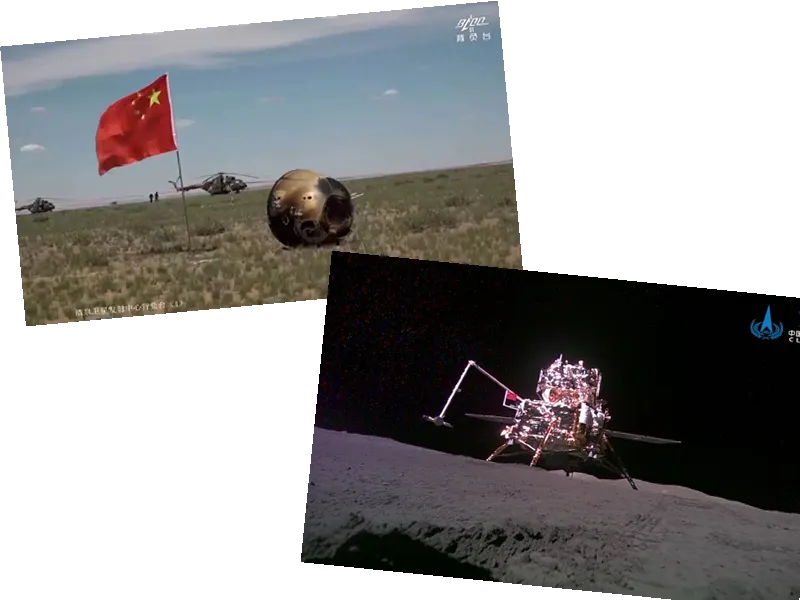China has marked another historic milestone in its ambitious space program by successfully bringing back soil samples from the far side of the moon. The Chinese probe Chang'e 6 landed in Inner Mongolia, carrying a precious soil capsule from the moon's far and mysterious side. This achievement, part of a 53-day mission, could offer important clues about the origins of the Moon and Earth.
The Chinese lunar missions, which began in 2007, have included orbiting the moon, mapping its surface, and landing spacecraft on both its near and far sides. The samples collected by Chang'e 6 are of immense scientific importance. Analyzing these samples may shed light on the moon's evolution, its geological history, and possibly the origin of the solar system.
This achievement underscores China's advanced technological capabilities in space exploration and its ambition to become a major player in this field. Future plans include more lunar missions, manned missions, and the construction of an international base at the moon's south pole.
The far side of the Moon, unseen from Earth, was first photographed by the Soviet probe Lunik 3 in 1959. Six decades later, China became the first nation to land a robotic ship in this unexplored region. Today, China has completed its most complex robotic lunar mission to date with Chang'e 6, successfully collecting two kilos of lunar rocks and transporting them back to Earth.
Scientists hope these samples will provide insights into the origins and evolution of not only the moon but the entire solar system. Analysts also anticipate significant strategic and geopolitical implications. Beijing views its space program as crucial to its plan to become a great economic, technological, and diplomatic power in the 21st century.
The Chang'e 6 probe landed back in Inner Mongolia without incident, as reported by the China National Space Administration. The samples obtained could have a different chemical composition from those recovered by American Apollo and Soviet Moon missions, potentially offering new clues about the formation of celestial bodies.
The mission was technically complex, with communication facilitated by the Queqiao 2 relay satellite. The rover explorer drilled into the ground to collect samples, and the ascent module took off carrying the capsule with the materials. The Chang'e program, named after a Chinese moon goddess, has achieved significant feats since its first mission in 2007.
China has ambitious plans for future lunar missions, including Chang'e 7 in 2026 to study lunar south pole resources and Chang'e 8 in 2028 to test advanced technology. The country aims to send taikonauts to the lunar surface before 2030, demonstrating its maturity as a space power and consolidating its attractiveness as an international partner.
The Chang'e program is also paving the way for the International Lunar Research Station (ISIL), a base being developed with Russia's Roscosmos. While China has collaborated with the European Space Agency, France, and Italy on Chang'e 6, future cooperation remains uncertain due to current geopolitical tensions.
- The success of Chang'e 6 highlights China's growing capabilities in space exploration and its strategic ambitions. This mission is not just a scientific endeavor but also a demonstration of China's technological prowess and geopolitical aspirations.
- The samples collected from the far side of the moon are expected to provide new insights into the differences between the moon's two hemispheres. This could help scientists understand the geological activity responsible for these differences and offer clues about the formation of celestial bodies.
- China's space program has been steadily advancing, with significant investments in technology and infrastructure. The Chang'e missions are a testament to China's commitment to becoming a leading space power and its readiness to collaborate on international projects.
- The International Lunar Research Station (ISIL) is a significant part of China's future plans in space exploration. Developed in collaboration with Russia, this base aims to establish a human presence on the moon and utilize its resources for further exploration.






